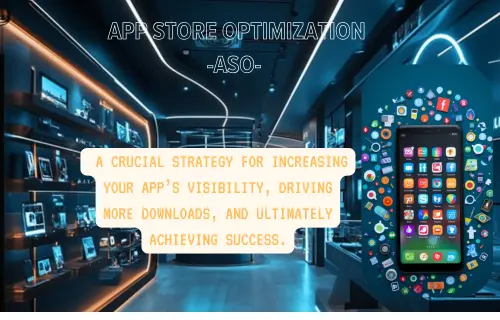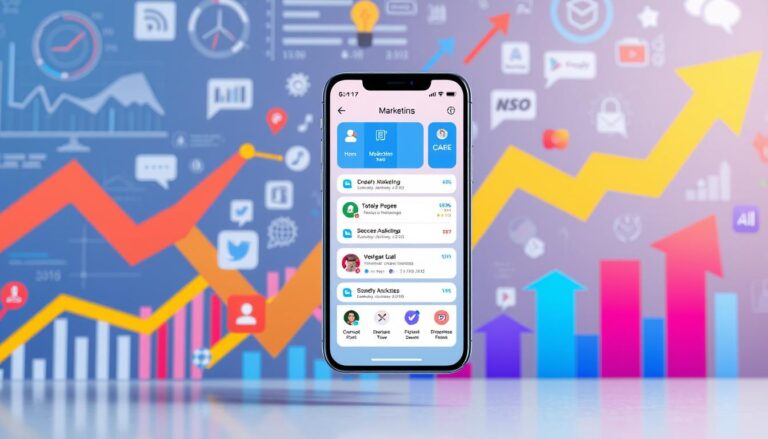Mobile App Marketing: Mastering App Store Optimization (ASO) for Success

In the competitive world of mobile app marketing, App Store Optimization (ASO) is an essential strategy to increase your app’s visibility, drive more downloads, and ensure long-term success. Much like SEO (Search Engine Optimization) for websites, ASO helps apps rank higher in search results within app stores like the Apple App Store and Google Play Store. With over 5 million apps combined on these platforms as of 2023, mastering App Store Optimization is vital for standing out.
This article covers everything you need to know about ASO, from its core elements to actionable tips for maximizing your app’s discoverability.
Table of Contents
1. What is App Store Optimization (ASO)?
App Store Optimization refers to the process of improving various elements of an app’s store listing to enhance its visibility in search results and conversion rates. Similar to SEO, ASO involves targeting relevant keywords, but it also includes optimizing your app’s title, description, visuals, and user reviews. The ultimate goal is to increase organic downloads, attracting users without relying solely on paid ads. With 70% of app store users relying on search to discover new apps, ASO is a critical factor in a successful app marketing strategy.
Updated Figures and Industry Insights
- App store user spending reached $170 billion in 2023, with 50% of that attributed to games.
- Google Play Store accounts for 71% of app downloads worldwide, while the Apple App Store leads in consumer spending.
- Optimized apps are estimated to have a 30% higher download rate than non-optimized apps, highlighting the importance of a well-executed ASO strategy.
2. Why is ASO Important for Mobile App Marketing?
In a crowded market, having a robust ASO strategy is crucial. Here’s why:
- Increased Visibility: With effective App Store Optimization, your app is more likely to appear in search results when users look for apps with similar functionalities.
- Better User Acquisition: Optimized listings attract users actively searching for an app like yours, leading to high-quality downloads.
- Lower Marketing Costs: Unlike paid advertising, ASO offers a cost-effective way to drive traffic organically, reducing dependency on ad budgets.
- Higher Retention Rates: Users who find your app through search are often more interested in its features, leading to better retention rates compared to those acquired through generic ads.
3. Key Elements of App Store Optimization (ASO)
Mastering ASO requires understanding the key factors that influence your app’s ranking and appeal in app store search results. Let’s dive into the most important elements:
3.1 App Title
The app title is one of the most important elements for App Store Optimization. It directly affects how your app is indexed and ranked in search results. Here’s how to create an optimized title:
- Include the Primary Keyword: Ensure the primary keyword, such as App Store Optimization, is present in the title.
- Stay Concise: Use up to 30 characters for the Apple App Store and 50 for Google Play to avoid truncation.
- Highlight Core Functionality: Clearly communicate what your app does while making the title catchy and memorable.
3.2 Keywords (iOS) and Description (Android)
Keywords are the backbone of ASO strategy. For iOS apps, keywords are placed in a specific field, while Android apps rely more on keywords within the description. Here’s how to use keywords effectively:
- Research Relevant Keywords: Tools like Sensor Tower, App Annie, and Ahrefs can help you find high-traffic keywords relevant to your app’s features.
- Optimize Descriptions: Focus on placing keywords naturally in the description, especially in the first 255 characters, as this section holds the most weight for Android apps.
- Avoid Keyword Stuffing: Use keywords organically. Overusing them can make your description appear spammy and affect user readability.
3.3 App Icon
Your app icon is the first visual impression users get of your app, so it should be eye-catching and professional. A well-designed icon can improve click-through rates, leading to more downloads. Consider these tips:
- Simplicity and Clarity: Use simple designs that clearly represent your app’s core function.
- Consistency: Make sure the icon aligns with your app’s theme and overall branding.
- A/B Testing: Test different icon designs to see which one resonates best with users.
3.4 Screenshots and Preview Videos
Screenshots and preview videos allow potential users to see your app in action before downloading. Here’s how to make them effective:
- Highlight Key Features: Use screenshots to show the app’s core functionalities and interface.
- Use Captions: Add brief captions to each screenshot to explain what users are seeing.
- Create a Short Preview Video: A 15-30 second video can provide a quick overview of the app’s features and user interface. Make sure the video is high-quality and focuses on the app’s value.
3.5 User Ratings and Reviews
Ratings and reviews can significantly impact your app’s ranking in search results. Potential users often look at these before deciding to download an app. Here’s how to manage ratings effectively:
- Encourage Positive Reviews: Prompt users to leave a review after they’ve had a positive experience.
- Address Negative Feedback: Respond to negative reviews promptly and address user concerns to improve your app’s reputation.
- Regularly Monitor Reviews: Use user feedback to identify areas for improvement and update your app accordingly.
4. How to Perform Effective Keyword Research for ASO
Keyword research is the foundation of a successful ASO strategy. The right keywords can significantly increase your app’s visibility in search results. Here’s how to do it:
- Brainstorm Keywords: List words that describe your app’s core features and functionalities.
- Analyze Competitors: Review the keywords used by competing apps to identify gaps and opportunities.
- Use ASO Tools: Platforms like MobileAction and Keyword Inspector can provide insights into search volumes and competition levels.
- Focus on Long-Tail Keywords: Long-tail phrases like “best budgeting app for students” are less competitive and can attract users with specific needs.
5. Common ASO Mistakes to Avoid
Avoiding these common mistakes can help you achieve better results with your ASO efforts:
- Keyword Stuffing: Overusing keywords in your app description can make it difficult to read and appear spammy. Focus on natural language.
- Ignoring User Feedback: Regularly monitor and respond to reviews to build trust with users.
- Neglecting Updates: Keep your app updated with new features and improvements. This encourages users to stay engaged and helps maintain a positive rating.
6. Measuring the Success of Your ASO Efforts
Tracking the performance of your ASO strategy is essential for making data-driven improvements. Use the following metrics to measure success:
- App Store Rankings: Monitor how your app ranks for your target keywords.
- Conversion Rate: Track how many users download your app after visiting your listing. A low conversion rate may indicate a need for better visuals or descriptions.
- User Retention: Measure how many users continue to use your app after installation. High retention rates often correlate with positive user experiences.
7. Conclusion: The Long-Term Value of App Store Optimization
App Store Optimization is an ongoing process that demands consistent effort but delivers substantial long-term rewards. By focusing on effective keyword research, optimizing visual elements, and engaging with user feedback, your app can achieve higher visibility and attract users who are more likely to convert into loyal customers. Remember, the app market is constantly evolving, so regular updates and adjustments to your ASO strategy are essential for maintaining growth and staying ahead of competitors..






6 Comments
Comments are closed.